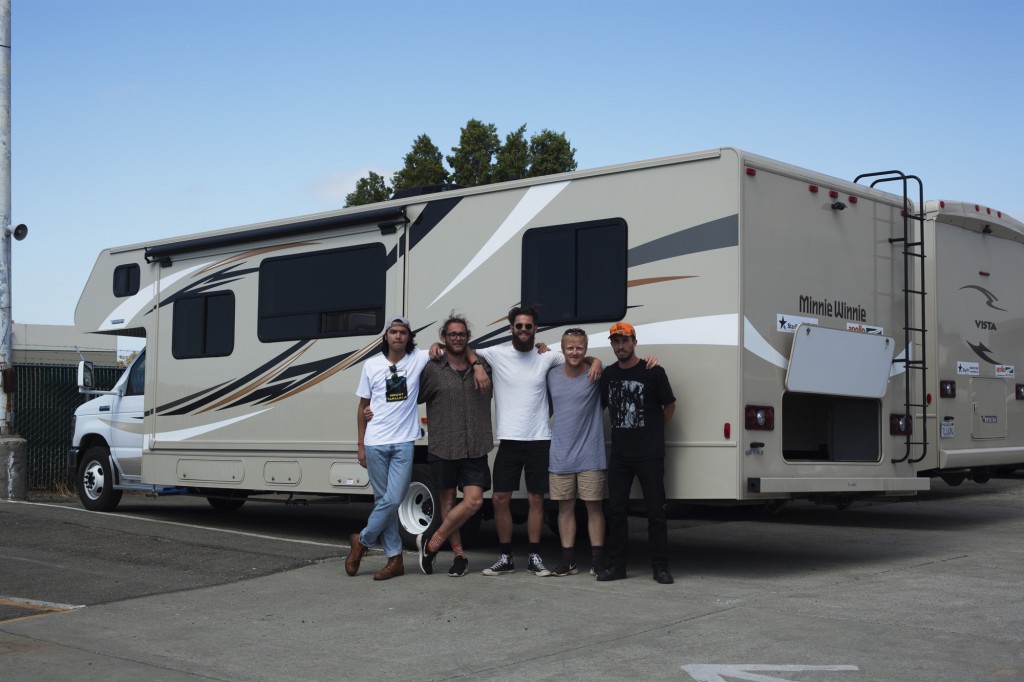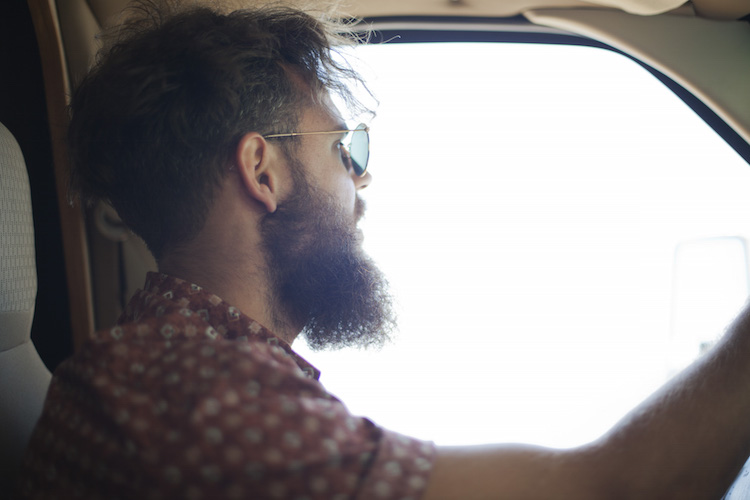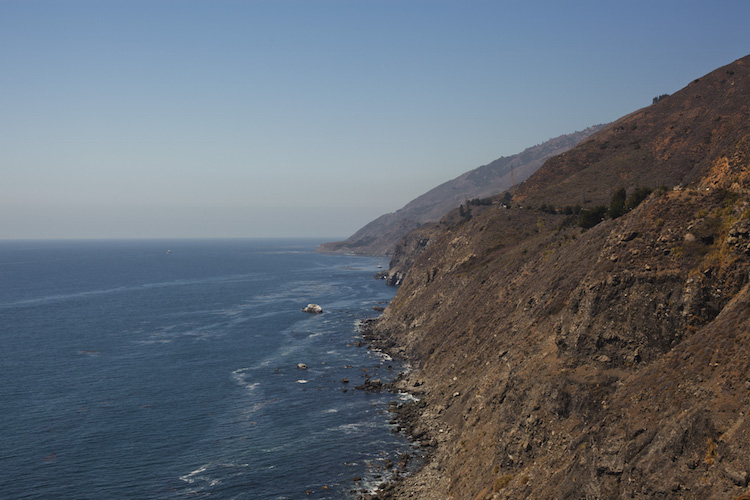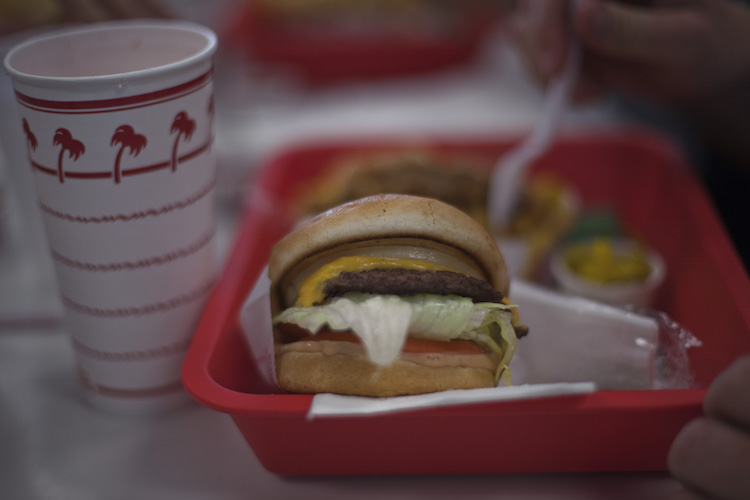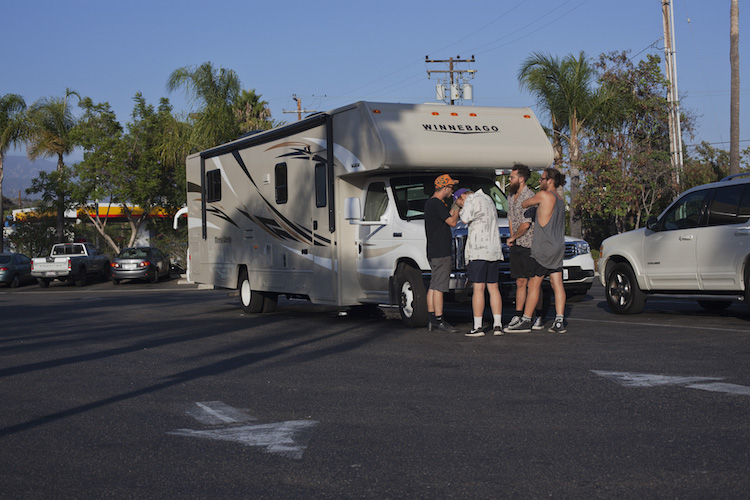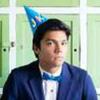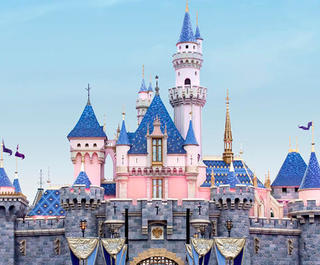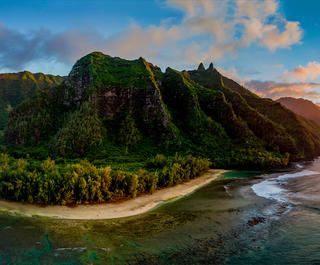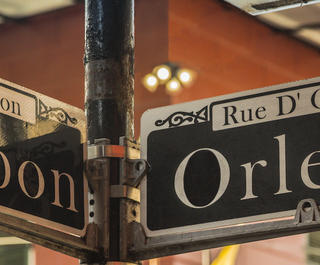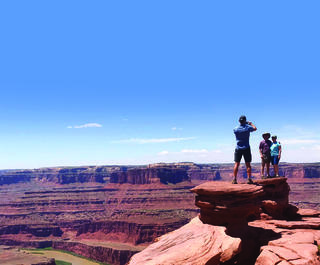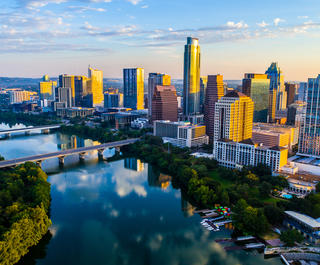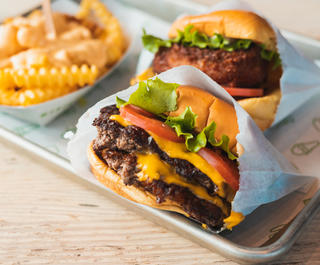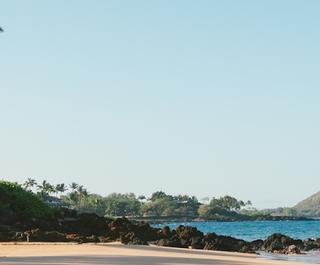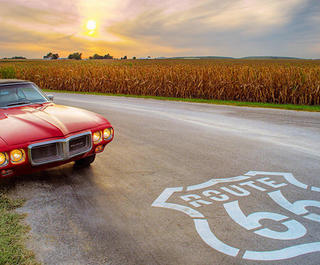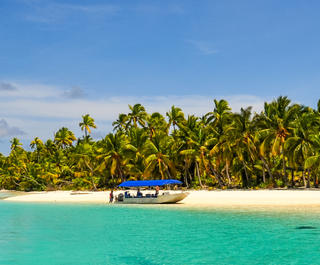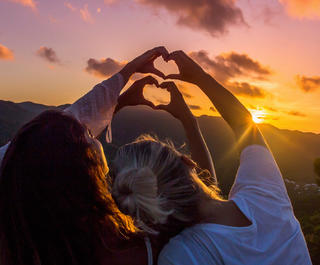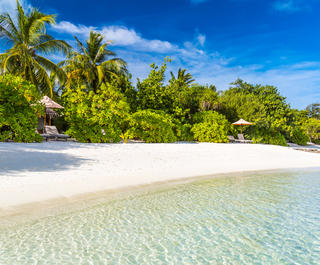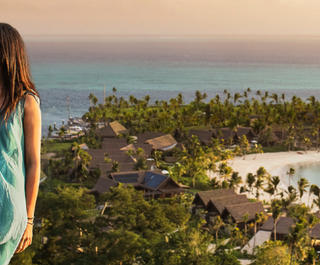
Plenty of us dream of driving California's legendary Pacific Coast Highway between Los Angeles and San Francisco. But few do it as Tim Lambourne did, in an enormous and lumbering RV named Rae Ventura.
Once a year they gather, near Nevada on the Northwest side of America, in a place where otherwise intelligent people wouldn’t normally gather. It’s an arid, hot, dusty place, a place that makes Breaking Bad’s desert scenes feel lush. The gathering, which you might know as Burning Man, occurs around the start of September. To inhabit this uninhabitable place for a week or so you’re going to need some protection against the elements.
What we Kiwis call a camper van, the bane of anyone trying to drive up a hill in the Coromandel between November and March, the Americans call an RV. These RVs, these mobiles homes, are not exclusively an American phenomenon – most developed countries have some version of them. But as with much Stateside, the American version is larger. The modern RV has evolved well past its logical resting point, growing into something beautifully grotesque.
Recreational Vehicle, the term from which RV is shortened, doesn’t do the RV justice. “Recreational” is too playful a word. There is an ominous presence about these machines. It’s not evil they exude, but rather a sense of foreboding: if you do not respect the RV, do not take her seriously, you will pay the price. It’s the size. They are massive, teetering on the limit of how big a vehicle can be before you enter the world of freight or ocean travel.
+++
Around August the RV industry tries to move their flock to San Francisco where they will be hired, en masse, filled with supplies, and driven to Burning Man for five days of hedonism, experimentation and dust.
I’m not a logistics expert but I assume that trying to relocate hundreds, possibly thousands of RVs from all over America to San Francisco is a bit of a nightmare – so nightmarish that RV companies give up trying to make any kind of profit and instead barter a deal with the more frugal among us.
Take this RV, they say, this fridge-freezer on wheels, and shepherd her to San Francisco. Never mind the $5000 we normally charge, or the exorbitant mark-up on every mile you drive, or the probable but not confirmed tax for putting air in the tyres. Just get her to San Francisco. We’ll charge you one dollar a day, a 1000 per cent reduction in price. Just get her to San Francisco. Please.
This is where we came in. Four Kiwis and an American looking for an adventure, we chose a 5-berth “Mini Winnie” RV.
A Mini Winnie, a five berther. These words don’t sound all that large when you’re reading them, but words, like contracts, can be deceiving. We picked her up from a place close to the airport, as that is where big transit lives. These machines are not designed for compact urban living. You can drive them in the city – there's no law against it – but once you have squeezed an RV through San Francisco’s city centre at rush hour, pissing off everyone around you, well, the RV people know that next time you’ll find an alternate route.
We gave ourselves five days to get her from Los Angeles to San Francisco. We had grand aspirations for the trip: hit Vegas, Yosemite, Big Sur, the Redwoods, probably Oregon too before tracking back down to San Francisco and presenting her to the soon-to-be Burning Men.
America is a big place. We knew this to be true, but we didn’t reckon with it until Google Maps told us, in a slightly patronising tone, that many of our destinations were 10 hours apart as opposed to the “about three or so...” we had assumed.
Vegas was the first to fall, to the dismay of my friend Gus.
"Vegas with the boys, bro! We have to do Vegas!” he pleaded.
Yosemite was next, which we justified by quoting Henry, the one American in our posse, who told us it’s overrun with tourists this time of year anyway. Oregon was the last to go, although I think we all knew in our hearts we were never going that far north.
That left Big Sur and the Redwoods. Highway 1 up the West Coast. A beautiful drive and a place I had wanted to visit ever since I'd seen a video on YouTube of Crosby, Stills, Nash and Young playing Down by the River at the Big Sur Folk Festival in 1969.
+++
It took a few hours to get out of greater Los Angeles, off the 101, and onto Highway 1, our home for the next five days. Jonny volunteered to drive the first leg, and with surprising ease started to come to terms with the vehicle, figuring out how she liked to corner, how she prefered to brake, coming to understand her wants and needs. Henry, the American, rode shotgun while Gus, having come to terms with driving in the opposition direction to Las Vegas, hung out with me and Ham at the dinner table. We drank Modelos beer, from Mexico.
We named our RV Rae Ventura, off the back of a conversation an hour or so into the drive – most likely as we passed through Ventura County, north of Los Angeles – that Ace Ventura 2: When Nature Calls surely stands as one of the greatest comedies of its generation.
Rae's exterior was beige, with tiger-inspired speed stripes down the sides. Inside, the master bedroom had a double bed and half-dozen cabinets and drawers. There was a shower, a toilet, a kitchen complete with fridge, freezer, microwave oven and gas elements. The dinner table turned into a double bed, as did the couch. Above the driver's and passenger’s seats, another double bed.
We had only two rules: someone must always be in the passenger seat to keep the driver company, and don’t use the toilet. The thought of trying to empty “black water” at the end of five days seemed too unpleasant a task, so we resolved to deal with that by not dealing with it.
Around nightfall on day one we pulled off the main road and went searching for somewhere to park Rae for the evening. Google found us a campground which charged $56USD to stay for the night, but we knew we had everything we needed to sleep for free. We parked Rae in a carpark next to the campground, ignoring the very specific NO PARKING BETWEEN 2AM AND 6AM sign.
"We're in the middle of nowhere," Henry assured us. “As long as we're not too loud it will be fine."
That sounded like something someone who knows what they are talking about would say, so we parked up and started playing Shithead. Shithead is a shedding game similar to President or Scum, but instead of the loser giving the winner his or her two best cards, the loser of each round of Shithead must wear a box over their head for the duration of the next.
It doesn't sound like much, but it's quite demoralising trying to play a game of cards inside a box with two eye holes cut out of it. Unfortunately, in our rush to get out of LA we had thrown out the beer box so we had to improvise: the loser of each round had to immediately leave Rae and go sit on the roof by themselves, without their phone, to think about how poorly they had played.
Anyone who had driven past the Akai Campground carpark near San Luis Obispo between 10pm and 2am would have seen a man sitting on the top of an RV looking forlorn while four of his mates sat inside laughing. Jonny thought it would have been even better if we had a box to wear while on the roof to really add to the bizarre and slightly terrifying scene.
+++
Big Sur turned out to be both a highlight and something of a let down. I guess we had forgotten that when it comes to beautiful coastline New Zealand was not born wanting. While the great Pacific shone deep blue on our left, the brown, drought-stricken California coastline left us scenically spoiled Kiwis a little bemused. That was until we saw the whales. And the dolphins, who joined us for an afternoon splash when we pulled over to swim in a secluded beach.
We continued up Highway 1 and pulled into a campground in the forest. Walking around at dusk felt like you were strolling through Hollywood’s numerous depictions of the great American summer camp. Families who had obviously been coming here for generations BBQ’ed amongst the tall trees. Hot dogs on grills and beer guts over here, Budweiser and khaki shorts over there. On the softball diamond, Ray's Bar and the Carmel Crushers were facing off in the final of the summer-long Camp tournament.
+++
The next day, in a Safeway supermarket in Santa Cruz, a college beach town not unlike Mount Maunganui, I saw cops descend upon a half dozen or so haphazardly dressed humans hanging around outside. One was brought inside, a couple metres from where I was sitting, and questioned. If you suspected snorting cocaine and brandishing a large hunting knife outside your local supermarket is a bad idea, I can confirm it is.
It got worse. When we tried to get Rae back on the road our path was blocked by police searching a 1980s Toyota and pulling out their finds for all to see: among other illegal paraphernalia, used needles.
No one said it, but we all knew it was time to get the hell out of Santa Cruz. Time to get to the Redwoods. We had to go through San Francisco and head north over the Golden Gate Bridge. Google Maps showed us a road through the heart of San Francisco, still marked as Highway 1, which I assumed meant still a highway. Which it did, until it didn’t. We spent an hour and a half trying to get Rae through San Francisco. One way streets. Tiny lanes. A truck smacking into Rae’s wing mirror. The San Francisco experience broke Jonny who, after volunteering for the first leg four days ago, had driven the entire trip with no protesting from the rest of us.
+++
Rae had a kitchen, but California has In ’N’ Out Burger, and traversing the Golden State without stopping at In ’N’ Out is like going to Disneyland and not waiting hours on end in a queue. You have to do it. In ’N’ Out’s menu has but three choices of burger: hamburger, cheeseburger, or double double (two patties and two slices of cheese).
In ’N’ Out became something of a sanctuary for us during our trip: not just a place to eat burgers, but a place to escape Rae for an hour or so, to use amenities we knew we were not responsible for cleaning. Gus took a particular interest in the burger chain, especially when Henry told him that there is a secret menu. You can actually order more than the three burgers on offer: you can get a ‘triple’ cheeseburger for instance, three patties and three slices of cheese, or a “quad”.
During one particular visit to In ’N’ Out, a little closer to breakfast time than I would care to admit to my mother, Gus readied himself to down the four-by-four, the quad. He moved that thing, and his fries, from outside to inside his body with terrifying ease.
A couple hours later, sensing an opportunity, we told Gus we would chip in to buy him another quad if he was game enough to eat two in one day. Three In ’N’ Out’s passed before he declared he was ready. We pulled off the highway and into a drive-thru. Jonny and Ham stepped out of Rae, into the baking hot California sun, to smoke a cigarette. Surprised and a little confused at their durrie break, Gus waited for their return to the vehicle before announcing, with something close to moral superiority, that he couldn’t believe they could smoke a cigarette in this kind of heat.
“I know,” said Ham. “How disgusting are we, right?”
Gus finished his second quad before we were back on the Highway.
+++
Our last night we spent partying in Oakland, east of San Francisco, Jonny having told us with an authority we didn’t care to question that he would not be driving Rae through San Francisco again. We woke with two and a half hours to return Rae to the RV company. We scrambled through the dossier of information to figure out what we needed to do before she was in a returnable state. It involved emptying two types of water: Grey Water, sink and shower; Black Water, toilet. There was a trailer park close to the RV drop-off point where you can pay to empty your waters. We pulled in and marvelled at the number of late-model convertibles parked next to trailer homes.
Gus, a builder by trade, did us a solid and figured out how to run the hose from the grey-water plug to the disposal point.
“Should we just empty the Black Water as well?” he asked. “Just in case there’s something left over from last people who hired it – we don’t want to get stung for that.”
It made sense, so Gus fixed the hose to the black-water tank. Out came some water, sending a volt of electricity through the boys:
“WHO USED THE TOILET??!?!”
“We had one rule!!!!” in chorus.
Shifty eyes darted left and right. Every man denying such a betrayal.
Had we more time, had we not had three European families waiting to empty their own RVs' grey and black water, we could have set up some kind of kangaroo court to discover the man who betrayed Rae. But we were 45 minutes away from the drop off time, so we agreed to resolve it by not resolving it.
The rest of the morning went as smoothly as it could have. We took Rae to her San Francisco drop-off point. The RV people cleared the paper work, and we sat around gaping at the hundreds of Minnie Winnies around us gearing up for Burning Man, while recalling the trip that was.
The agreement amongst the group, more conclusive than anything we had talked about all trip: if you want to see America proper, if you have the time and the inclination, find your own Rae Ventura and let the adventure unfold before you.
It might not be what you expect, but it will leave you with one hell of a story.

